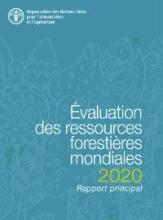Land Library Search
Through our robust search engine, you can search for any item of the over 73,000 highly curated resources in the Land Library.
If you would like to find an overview of what is possible, feel free to peruse the Search Guide.
/ library resources
Showing items 1 through 9 of 109.La forêt sacrée de Badjamè (Aplahoué, Couffo) ne bénéficie presque d’aucune mesure de protection et de gestion malgré son importance écologique.
The formalization of community forest tenure rights is expected to promote sustainable community forest management, and is seen as a way to combine objectives related to environmental conservation, livelihood improvement, and local self-determination.
This paper seeks to investigate the interconnections between climate change and land grabbing. It offers a nuanced understanding of the critical intersections of climate change mitigation policies with land grabbing, before and after the Paris Agreement.
: A growing body of literature analyses the conflict implications of REDD+ (Reducing emissions from deforestation and forest degradation in developing countries). However, the way these conflicts unfold is little understood.
La FAO a achevé sa première évaluation des ressources forestières mondiales en 1948. À cette époque, son principal objectif était de recueillir des informations sur l’offre de bois disponible pour satisfaire la demande de reconstruction d’après-guerre.
Cinque Terre, one of the most important Italian cultural landscapes, has not been spared from depopulation and agricultural abandonment processes, that involved many rural areas in Europe, as a consequence of socio-economic transformations that occurred after WWII.
Czech agriculture is dealing with the consequences of climate change. Agroforestry cultures are being discursively reintroduced for better adaptability and resilience, with the first practical explorations seen in the field.
Throughout the Mediterranean basin, the long-term interaction between human activities and natural processes has led to the formation of unique ecosystems whose biodiversity may be higher than that of the “original” systems.







